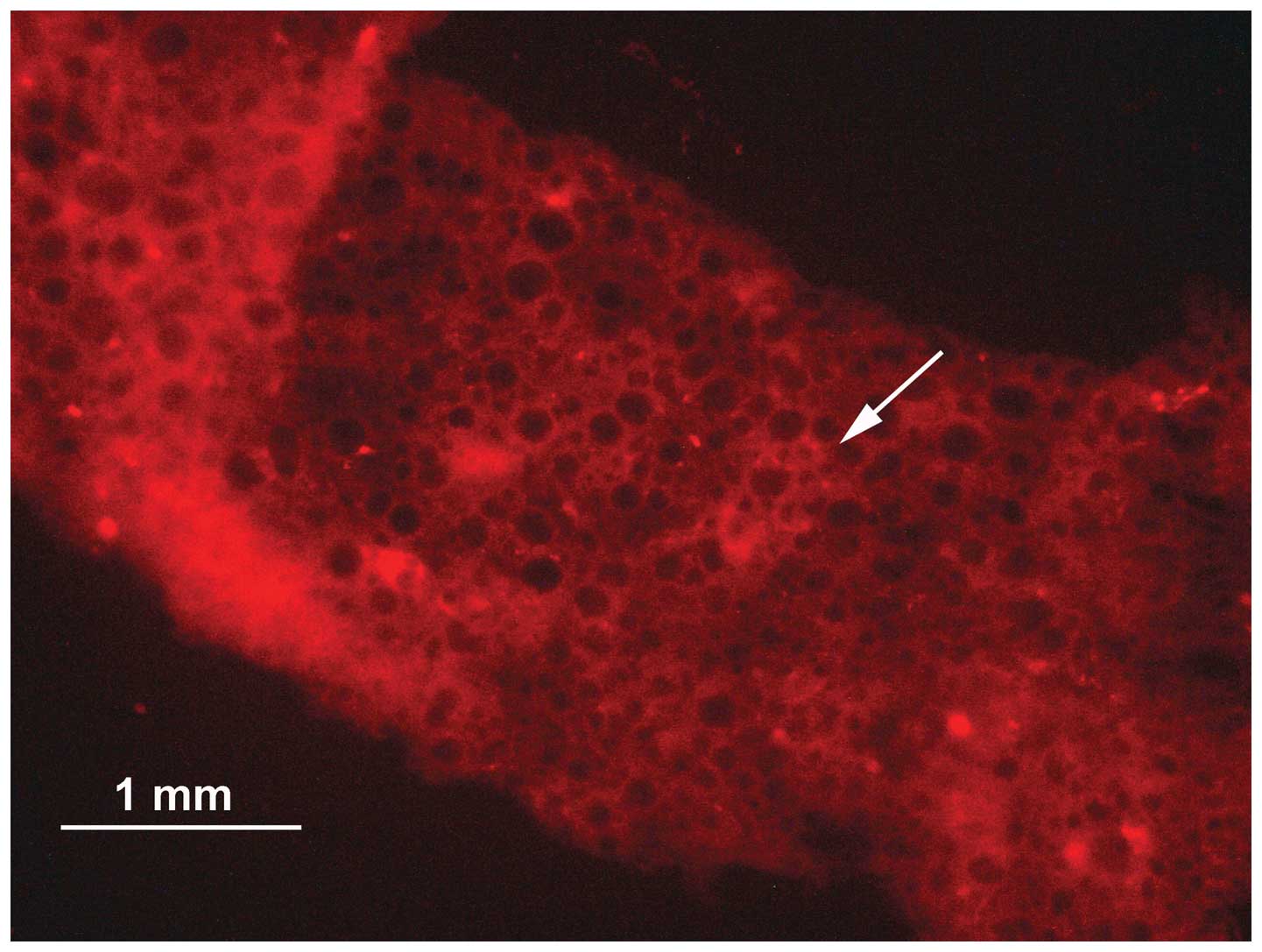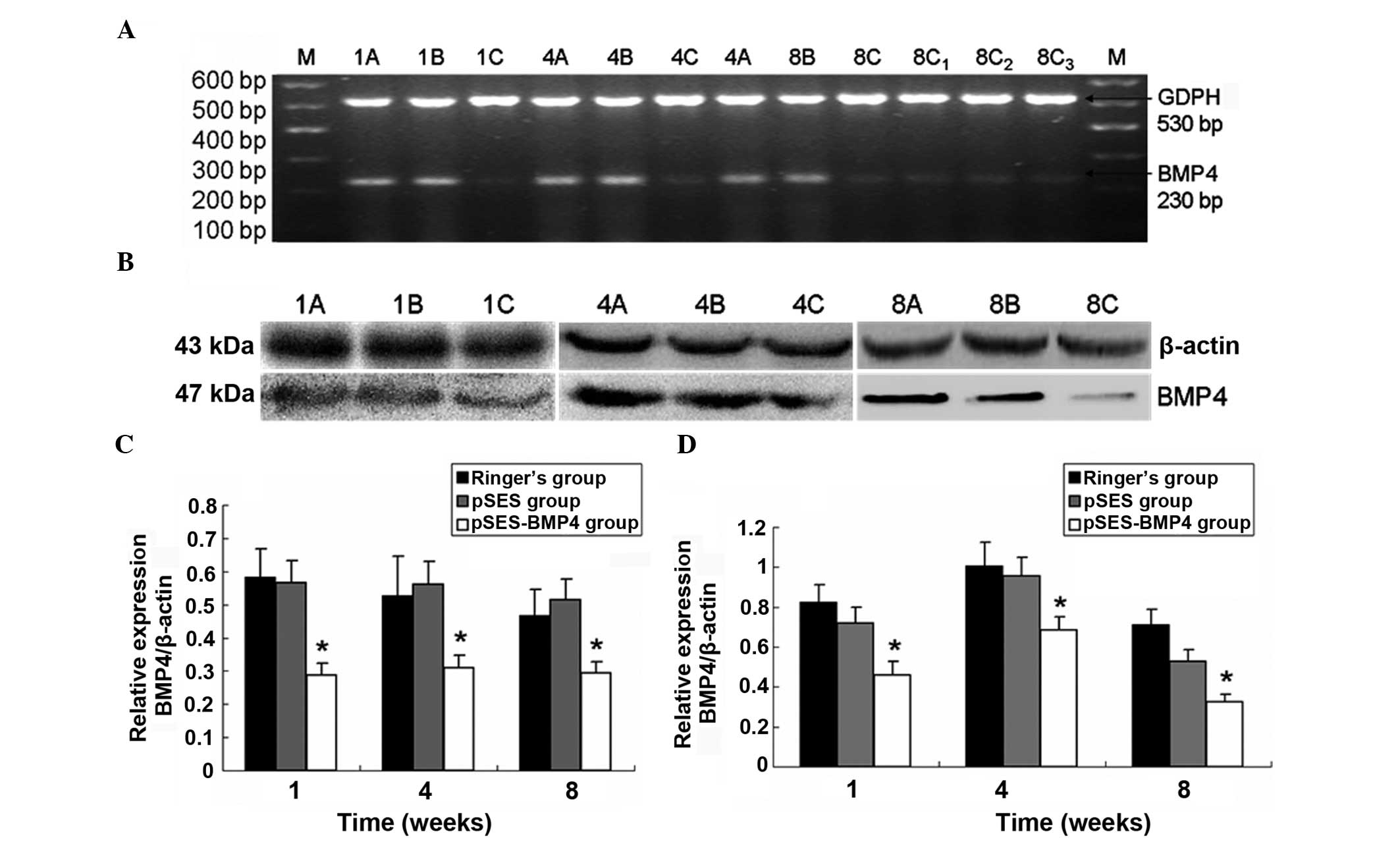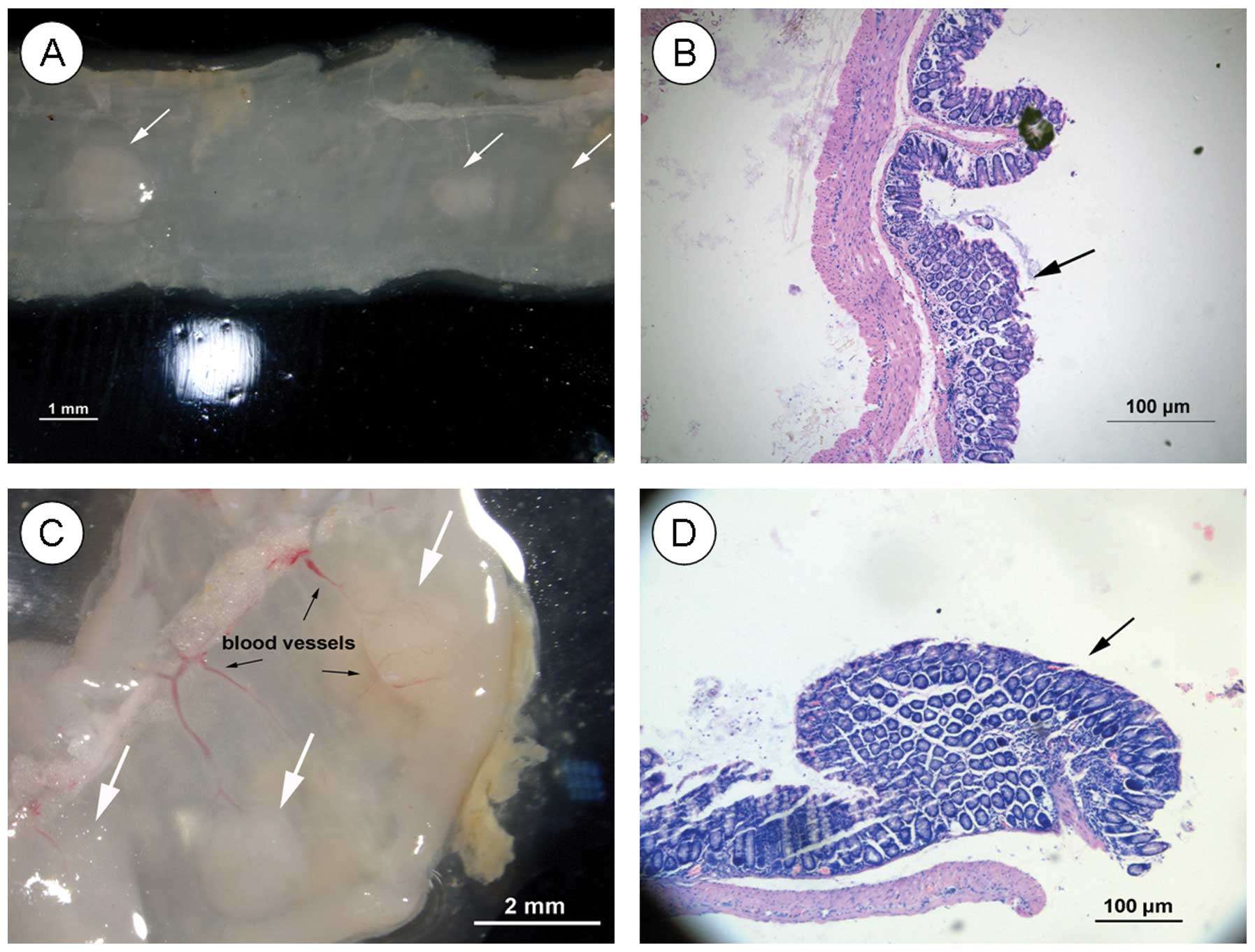|
1
|
Lee YJ, Myung SK, Cho B, et al: Adiposity
and the risk of colorectal adenomatous polyps: a meta-analysis.
Cancer Causes Control. 22:1021–1035. 2011. View Article : Google Scholar : PubMed/NCBI
|
|
2
|
Babaei M, Pourfarzi F, Yazdanbod A, et al:
Gastric cancer in Ardabil, Iran - a review and update on cancer
registry data. Asian Pac J Cancer Prev. 11:595–599. 2010.PubMed/NCBI
|
|
3
|
Brenner H, Altenhofen L and Hoffmeister M:
Sex, age, and birth cohort effects in colorectal neoplasms: a
cohort analysis. Ann Intern Med. 152:697–703. 2010. View Article : Google Scholar : PubMed/NCBI
|
|
4
|
Wasif N, Etzioni D, Maggard MA, et al:
Trends, patterns, and outcomes in the management of malignant
colonic polyps in the general population of the United States.
Cancer. 117:931–937. 2011. View Article : Google Scholar : PubMed/NCBI
|
|
5
|
Ferrari A, Rognone A, Casanova M, et al:
Colorectal carcinoma in children and adolescents: the experience of
the Istituto Nazionale Tumori of Milan, Italy. Pediatr Blood
Cancer. 50:588–593. 2008. View Article : Google Scholar : PubMed/NCBI
|
|
6
|
Wong VW, Wong GL, Tsang SW, et al: High
prevalence of colorectal neoplasm in patients with non-alcoholic
steatohepatitis. Gut. 60:829–836. 2011. View Article : Google Scholar : PubMed/NCBI
|
|
7
|
Lorente-Trigos A, Varnat F, Melotti A, et
al: BMP signaling promotes the growth of primary human colon
carcinomas in vivo. J Mol Cell Biol. 2:318–332. 2010. View Article : Google Scholar : PubMed/NCBI
|
|
8
|
Karim BO and Huso DL: Mouse models for
colorectal cancer. Am J Cancer Res. 3:240–250. 2013.PubMed/NCBI
|
|
9
|
Venkatachalam K, Gunasekaran S, Jesudoss
VA and Namasivayam N: The effect of rosmarinic acid on
1,2-dimethylhydrazine induced colon carcinogenesis. Exp Toxicol
Pathol. 65:409–418. 2013. View Article : Google Scholar : PubMed/NCBI
|
|
10
|
Wasilewicz MP, Kolodziej B, Bojulko T, et
al: Overexpression of 5-lipoxygenase in sporadic colonic adenomas
and a possible new aspect of colon carcinogenesis. Int J Colorectal
Dis. 25:1079–1085. 2010. View Article : Google Scholar : PubMed/NCBI
|
|
11
|
Yang BL, Chen HJ, Chen YG, et al: Effects
of baicalin on an orthotopic transplantation mouse model of
mismatch repair gene deficient colorectal cancer. Zhonghua Wai Ke
Za Zhi. 50:843–847. 2012.(In Chinese).
|
|
12
|
Shimomoto T, Luo Y, Ohmori H, et al:
Advanced glycation end products (AGE) induce the receptor for AGE
in the colonic mucosa of azoxymethane-injected Fischer. 344 rats
fed with a high-linoleic acid and high-glucose diet. J
Gastroenterol. 47:1073–1083. 2012. View Article : Google Scholar : PubMed/NCBI
|
|
13
|
Shailubhai K, Yu HH, Karunanandaa K, et
al: Uroguanylin treatment suppresses polyp formation in the
Apc(Min/+) mouse and induces apoptosis in human colon
adenocarcinoma cells via cyclic GMP. Cancer Res. 60:5151–5157.
2000.PubMed/NCBI
|
|
14
|
Leko V, Park GJ, Lao U, et al:
Enterocyte-specific inactivation of SIRT1 reduces tumor load in the
APC(+/min) mouse model. PLoS One. 8:e662832013.PubMed/NCBI
|
|
15
|
Shuman JB and Gong SG: RNA interference of
Bmp-4 and midface development in postimplantation mouse embryos. Am
J Orthod Dentofacial Orthop. 131:e1–e11. 2007.PubMed/NCBI
|
|
16
|
Aruga J and Mikoshiba K: Role of BMP, FGF,
calcium signaling, and Zic proteins in vertebrate neuroectodermal
differentiation. Neurochem Res. 36:1286–1292. 2011. View Article : Google Scholar : PubMed/NCBI
|
|
17
|
Beppu H, Mwizerwa ON, Beppu Y, et al:
Stromal inactivation of BMPRII leads to colorectal epithelial
overgrowth and polyp formation. Oncogene. 27:1063–1070. 2008.
View Article : Google Scholar : PubMed/NCBI
|
|
18
|
Lowery JW and de Caestecker MP: BMP
signaling in vascular development and disease. Cytokine Growth
Factor Rev. 21:287–298. 2010. View Article : Google Scholar : PubMed/NCBI
|
|
19
|
Lubbe SJ, Pittman AM, Matijssen C, et al:
Evaluation of germline BMP4 mutation as a cause of colorectal
cancer. Hum Mutat. 32:e1928–e1938. 2011. View Article : Google Scholar : PubMed/NCBI
|
|
20
|
Tomlinson IP, Carvajal-Carmona LG, Dobbins
SE, et al: Multiple common susceptibility variants near BMP pathway
loci GREM1, BMP4, and BMP2 explain part of the missing heritability
of colorectal cancer. PLoS Genet. 7:e10021052011. View Article : Google Scholar
|
|
21
|
Barros R, Mendes N, Howe JR, et al:
Juvenile polyps have gastric differentiation with MUC5AC expression
and downregulation of CDX2 and SMAD4. Histochem Cell Biol.
131:765–772. 2009. View Article : Google Scholar : PubMed/NCBI
|
|
22
|
Farrall AL, Riemer P, Leushacke M, et al:
Wnt and BMP signals control intestinal adenoma cell fates. Int J
Cancer. 131:2242–2252. 2012. View Article : Google Scholar : PubMed/NCBI
|
|
23
|
Hardwick JC, Kodach LL, Offerhaus GJ and
van den Brink GR: Bone morphogenetic protein signalling in
colorectal cancer. Nat Rev Cancer. 8:806–812. 2008. View Article : Google Scholar : PubMed/NCBI
|
|
24
|
Vanderschuren H, Alder A, Zhang P and
Gruissem W: Dose-dependent RNAi-mediated geminivirus resistance in
the tropical root crop cassava. Plant Mol Biol. 70:265–272. 2009.
View Article : Google Scholar : PubMed/NCBI
|
|
25
|
Gratsch TE, De Boer LS and O’Shea KS: RNA
inhibition of BMP-4 gene expression in postimplantation mouse
embryos. Genesis. 37:12–17. 2003. View Article : Google Scholar : PubMed/NCBI
|
|
26
|
O’shea KS, De Boer LS, Slawny NA and
Gratsch TE: Transplacental RNAi: deciphering gene function in the
postimplantation-staged embryo. Biomed Biotechnol.
2006:1865.72006.PubMed/NCBI
|
|
27
|
Fire A, Xu S, Montgomery MK, et al: Potent
and specific genetic interference by double-stranded RNA in
Caenorhabditis elegans. Nature. 391:806–811. 1998.
View Article : Google Scholar : PubMed/NCBI
|
|
28
|
Vaishnaw AK, Gollob J, Gamba-Vitalo C, et
al: A status report on RNAi therapeutics. Silence. 1:142010.
View Article : Google Scholar : PubMed/NCBI
|
|
29
|
Austin CP, Battey JF, Bradley A, et al:
The knockout mouse project. Nat Genet. 36:921–924. 2004. View Article : Google Scholar : PubMed/NCBI
|
|
30
|
Woo CW, Tan F, Cassano H, et al: Use of
RNA interference to elucidate the effect of MYCN on cell cycle in
neuroblastoma. Pediatr Blood Cancer. 50:208–212. 2008. View Article : Google Scholar : PubMed/NCBI
|
|
31
|
Soares ML, Haraguchi S, Torres-Padilla ME,
et al: Functional studies of signaling pathways in
peri-implantation development of the mouse embryo by RNAi. BMC Dev
Biol. 5:282005. View Article : Google Scholar : PubMed/NCBI
|
|
32
|
Winnier G, Blessing M, Labosky PA and
Hogan BL: Bone morphogenetic protein-4 is required for mesoderm
formation and patterning in the mouse. Genes Dev. 9:2105–2116.
1995. View Article : Google Scholar : PubMed/NCBI
|













